From side-hustle to a $12 billion acquisition - the Mailchimp story
The story of Mailchimp & how they went from being a bootstrapped side-hustle to being acquired for $12 billion.
Friends,
Mailchimp is big today but back in 2001, it was nothing more than a side hustle. Ben Chestnut, Dan Kurzius, and Mark Armstrong started Mailchimp while working on their full-time web design service.
In 2021, Mailchimp got acquired for a mammoth $12 billion acquisition. Here is their story and how they did it.
Brought to you by:
ProductFruits is the user no-code user onboarding platform that helps fast-growing teams:
improve onboarding
increase conversion rates
reduce churn
Create your AI-powered, no-code onboarding flow for your product & speak with our dedicated onboarding specialists.
The start of Mailchimp
Mailchimp is big today but back in 2001, it was nothing more than a side hustle. Ben Chestnut, Dan Kurzius, and Mark Armstrong started Mailchimp while working on their full-time web design service.
Ben & Dan met while working at a company called Cox Media – Ben designed banner ads while Dan wrote code. In 2000 unfortunately, they were laid off. Struggling to find another, Ben & Mark (another fellow Cox Media employee) started their own web design company called Rocket Science Group. Dan joined them a year later.
Their web designing business was profitable from the beginning. And while serving their clients, they began to observe a recurring problem – everyone needed email marketing. So the three of them began offering email marketing & newsletter writing services. Initially they charged a fee per email sent & their rate started at $50 for 2500 emails to be sent.
Soon after, they developed an email marketing tool named Wemailer and started sending out emails on behalf of their clients. Since the tool was easy to use with no need for coding skills, they opened it up to their customer base for them to use on a $20/month subscription. And just like that, Mailchimp was born.
This pricing plan gave them more predictable revenue, which they reinvested back into the business without having to rely on outside funding.
But the three of them still treated Mailchimp as a side-hustle and were working on it during the nights and weekends. By 2005, they were offering users free trials, like sending 25 emails for free. And the reason for doing that was partly because the email marketing niche back in the 2000s wasn't all that lucrative to get into.
For example, spam emails were on the high, and people were annoyed. 95% of all emails sent in 2007 were spam emails. Add to that the established competitors like Constant Contact (which went public in 2007) eating away at market share. Mailchimp had to stay default-alive.
And to do that, it had to be profitable. But more importantly, they had to play to their strengths. And so they did. If Clayton Christensen's disruption theory is any indication, it's that big companies are too bulky to innovate leaving the door open to disruptors - in this case Mailchimp.
The founders realized that they would win by understanding their customers better than the bigger companies who would be slow to take feedback & execute upon them. So Mailchimp did the opposite - they were fast, nimble & in constant contact with their customers.
Because MailChimp “was itself a small business, it understood what those businesses wanted out of their marketing tools. Its offerings were cheaper, it added features more quickly, and it allowed greater customizations to fit customers’ needs.”
They worked on Maichimp on the side for 6 long years until in 2007, they hit 30,000 paying customers. At that stage, they made the call to call it quits on their web design business & go all in on Mailchimp.
How Mailchimp scaled
Ben realized the importance of marketing from the very start. And he leveraged content marketing as his primary distribution channel. He studied the Google algorithm and discovered that at the time, Google was indexing and giving higher ranking to PDFs. So he wrote a full PDF about email marketing. This got them their first online customers.
But content marketing was just one piece of the puzzle – they had 2 more big moves up their sleeve. The first one was creating a lovable & recognizable brand. Where existing email solutions were boring & bland, MailChimp stood out for being quirky and fun. And a big part of that was their mascot Freddie (Frederick von Chimpenheimer IV)
Freddie represented the company value at scale & it showed customers what Mailchimp was all about – making work fun, creativity, and independence.
Their product copy reflected this ethos as well – MailChimp associated sending great content as “easier than eating a banana.” When users were getting ready to send out an email campaign, MailChimp would show an animation of a hand sweating over a big “send” button.
Instead of making email marketing feel like a chore, MailChimp managed to make the experience fun.
A close look at Mailchimp's content style guide will show you what the brand stands for:
Fun but not silly
Confident but not cocky
Smart but not stodgy
Informal but not sloppy
Helpful but not overbearing
Expert but not bossy
Weird but not inappropriate
The second thing that Mailchimp did was to trigger growth loops & create a PLG lever.
So in September 2009, MailChimp announced they were going freemium. But it wasn't a gamble – they had studied the data they had collected since 2001 and made a calculated bet that this would work. And it did.
All of the emails sent by MailChimp’s free users were stamped with a hyperlinked image of Freddie, which would send folks to MailChimp.com.
This created product virality thanks to growth loops, as recipients clicked on Freddie and ended up learning more about Mailchimp & signing up.
As for the users on the free tier, they were incentivized too by Mailchimp. They earned “MonkeyRewards Credits” every time a person they referred through their MailChimp footer badge ended up becoming a paying customer. These users could then put those credits toward MailChimp services like inbox inspections or even future bills if they decided to upgrade.
One year after executing this strategy, Mailchimp had grown its user base 5x, from 85,000 in September 2009 to 450,000 in September 2010. The company was adding more than 30,000 new free users and 4,000 new paying customers each month. MailChimp’s profit, meanwhile, had grown 650%. As of September 2010, MailChimp’s CAC was less than $100.
Fast forward to 2012 & MailChimp’s user base had grown from 450,00 to 1.2 million. On average, they were adding 5,000 new users everyday.
But they still had to sustain this growth & reduce churn.
How Mailchimp sustained growth & expanded their market share
With this money, Mailchimp started to invest in Facebook ads. They use custom audiences to generate different kinds of adverts – their audiences be cold leads, existing subscribers (those who already follow Mailchimp & need to upgrade their existing subscription)
Based on their product analytics data, they found that first time users find the process of starting their first campaign daunting. So Mailchimp uses email drip campaigns to nurture email subscribers who haven’t yet launched their first campaign.
When it comes to the initial onboarding emails, Mailchimp encourages freemium users to get their lists imported & created so they can start sending emails as soon as possible. This pushes them towards their free limits, which in turn promotes paid subscriptions to occur & generates expansion revenue.
At the bottom of the email, they have rather subtle CTAs like (a) How to import contacts (b) How to manage a mailing list etc.
When customers stared getting the hang of their own campaigns, Mailchimp sent out emails to promote their additional services, such as Facebook ads, remarketing adverts, and landing pages.
Mailchimp offers tutorial-based content to this group of subscribers to get them to launch their first campaign. They set up automated email campaigns which would get sent every 3 days. This created greater brand visbility as their brand was appearing in people’s personal inboxes, as well as on their Facebook news feed.
Mailchimp's ad campaigns work in tandem with user product analytics data. For example, if you have a campaign set up, Mailchimp will send you tips on improving existing content. Likewise, if you integrate your social media pages, Mailchimp will send you targeted ads based on whether you're yet to start a campaign.
Mailchimp also ran sponsorships on podcasts. For example, it partnered with the very popular Serial podcast series on iTunes, running a 20-second advert at the start of each episode. This converted many avid listeners into new Mailchimp users.
In their podcast sponsorships, they used a range of speakers, and mentioned the “Mailchimp” brand name multiple times but never mentioned the actual site URL. This created curiosity among listeners which then who went out of their way to type in the URL and discover Mailchimp.
They also created short videos that were fun. For example, they played around with the Mailchimp name and created videos around KaleLimp, JailBlimp and MailShrimp – they even used them on billboards & subway signs. So when someone typed in the name, Mailchimp positioned itself to appear in Google's corrective text saying “Did you mean Mailchimp?” Mailchimp received almost 4 million organic searches from the campaign alone.
Mailchimp also started sending customers t-shirts, stuffed animals, or monkey hats for their cats. For MailChimp, the quality of the gifts they give to their customers is more important than the cost. It makes customers feel special.
Mailchimp sold for $12 Billion in 2021 to Intuit. And it remained bootstrapped all this time.
Here are the 7 key takeaways from Mailchimp:
Be close to your customer & listen to them.
Be patient & play the long game.
Branding is important & so is your brand voice
Understand user behavior & how they use your product.
Don’t be boring. Be not boring instead.
Segment your customers & nurture them accordingly
Induce curiosity without being obvious about it.


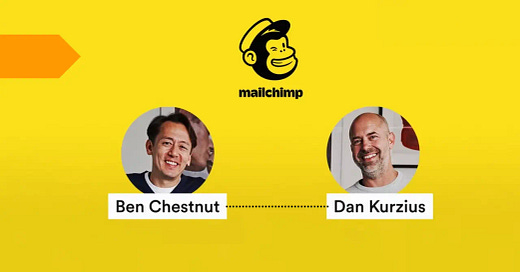





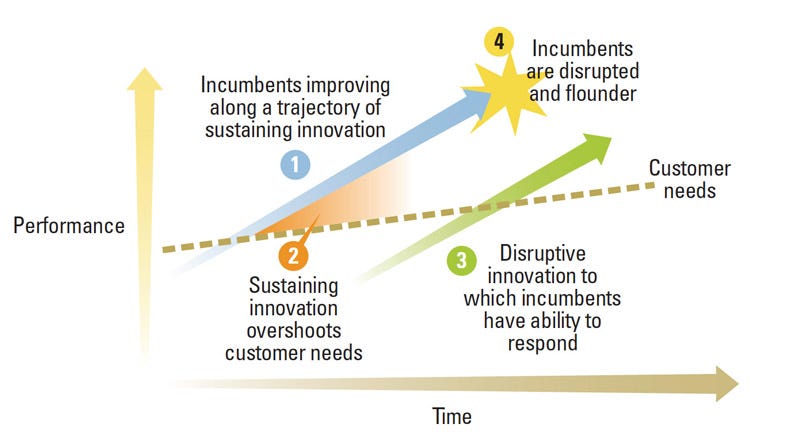
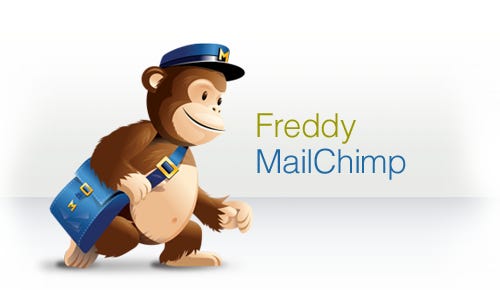
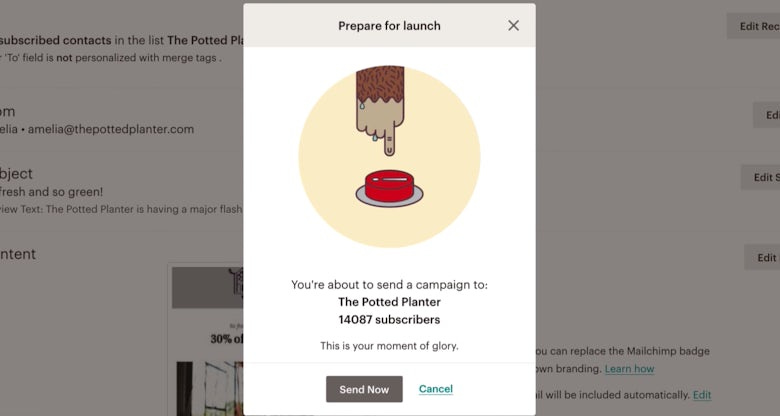
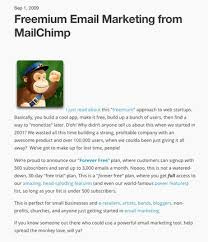


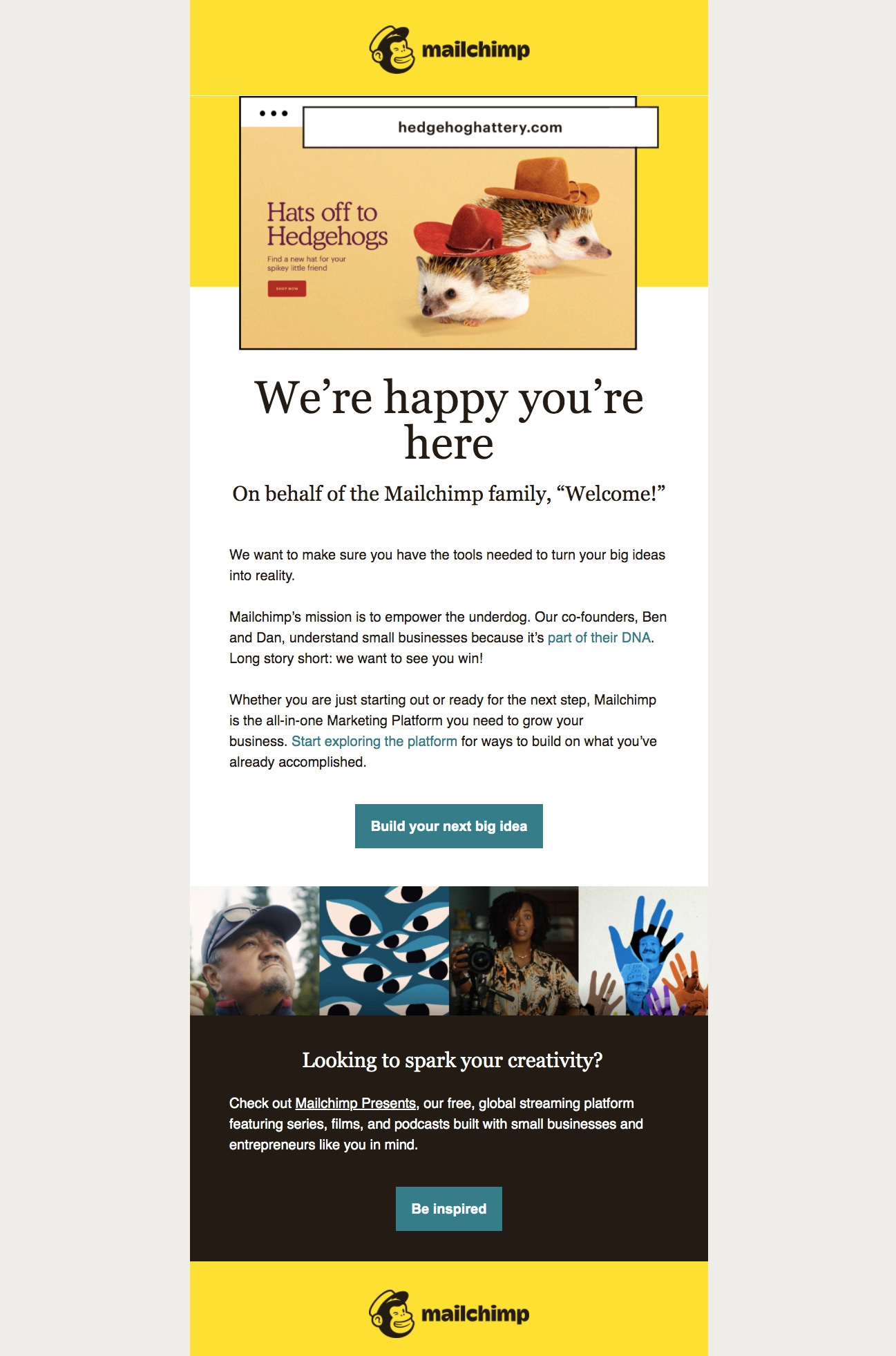
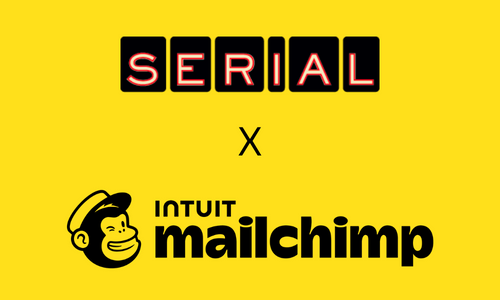
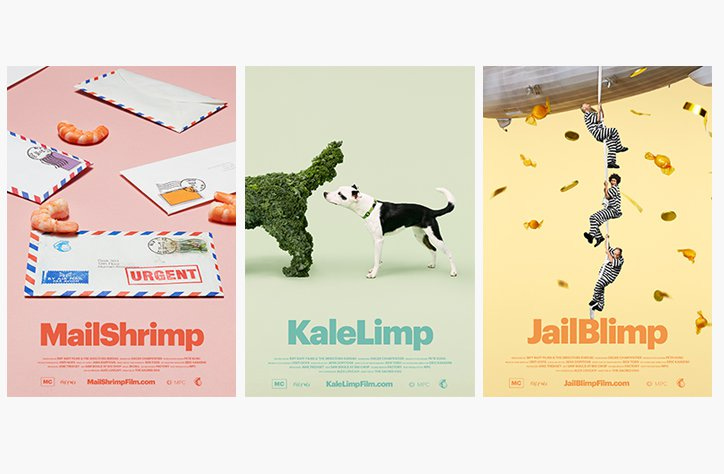
What an interesting journey and story! MailChimp powered all our businesses using their free plan, for years. MailChimp is one of those companies that's succeeded in building an excellent brand in a unique style. Love it!